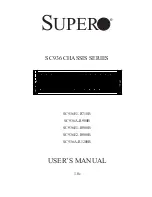
140
Intel
®
Server System SR2600UR/SR2625UR Service Guide
Left and right arrows
Select Menu - The left and right arrow keys are used to move between
the major menu pages. The keys have no affect if a submenu or pick list
is displayed.
Up arrow
Select Item up - The up arrow is used to select the previous value in a
menu item's option list, or a value field’s pick list. Pressing the <Enter>
key activates the selected item.
Down arrow
Select Item down - The down arrow is used to select the next value in a
menu item's option list, or a value field’s pick list. Pressing the <Enter>
key activates the selected item.
<F5> or <->
Change Value - The minus key or the <F5> function key is used to
change the value of the current item to the previous value. This key
scrolls through the values in the associated pick list without displaying
the full list.
<F6> or <+>
Change Value - The plus key or the <F6> function key is used to change
the value of the current menu item to the next value. This key scrolls
through the values in the associated pick list without displaying the full
list. On 106-key Japanese keyboards, the plus key has a different scan
code than the plus key on the other keyboard, but it has the same effect.
<Enter>
Execute Command - The <Enter> key is used to activate submenus
when the selected feature is a submenu, or to display a pick list if a
selected feature has a value field, or to select a sub-field for multi-valued
features like time and date. If a pick list is displayed, the <Enter> key
selects the currently highlighted item, undoes the pick list, and allows
another selection in the parent menu.
<Esc>
Exit - The <Esc> key provides a mechanism for backing out of any field.
This key undoes the pressing of the <Enter> key. When the <Esc> key is
pressed while editing any field or selecting features of a menu, the
parent menu is re-entered. When the <Esc> key is pressed in any
submenu, the parent menu is re-entered. When the <Esc> key is
pressed in any major menu, the exit confirmation window is displayed
and the user is asked whether changes can be discarded.
<F9>
Setup Defaults - Pressing <F9> causes the following to appear:
Setup Confirmation
Load default configuration now?
[Yes] [No]
If "Yes" is selected and the <Enter> key is pressed, all Setup fields are
set to their default values. If "No" is selected and the <Enter> key is
pressed, or if the <Esc> key is pressed, you are returned to the screen
you were in before <F9> was pressed without affecting any existing field
values.
Table 4. Setup Menu Key Use
Key to Press
Description
Summary of Contents for SR2600URLX
Page 4: ...iv Intel Server System SR2600UR SR2625UR Service Guide...
Page 8: ...viii Intel Server System SR2600UR SR2625UR Service Guide...
Page 18: ...xviii Intel Server System SR2600UR SR2625UR Service Guide...
Page 20: ...xx Intel Server System SR2600UR SR2625UR Service Guide...
Page 26: ...6 Intel Server System SR2600UR SR2625UR Service Guide...
Page 170: ...152 Intel Server System SR2600UR SR2625UR Service Guide...
Page 180: ...162 Intel Server System SR2600UR SR2625UR Service Guide...
Page 204: ...186 Intel Server System SR2600UR SR2625UR Service Guide...
Page 228: ...210 Intel Server System SR2600UR SR2625UR Service Guide...














































